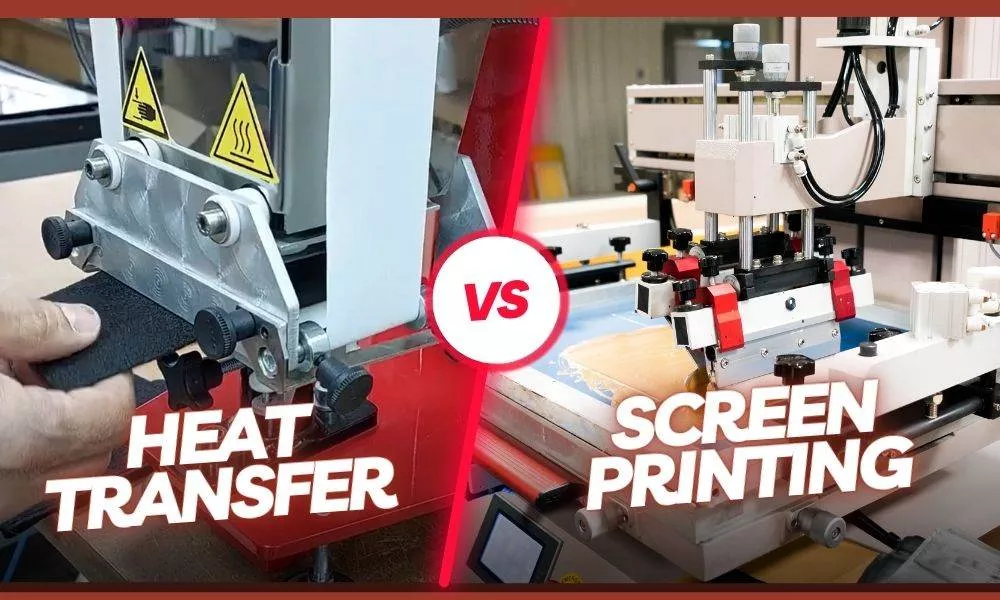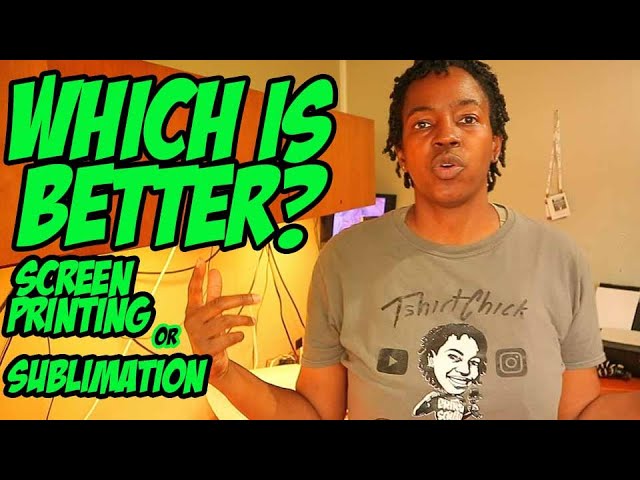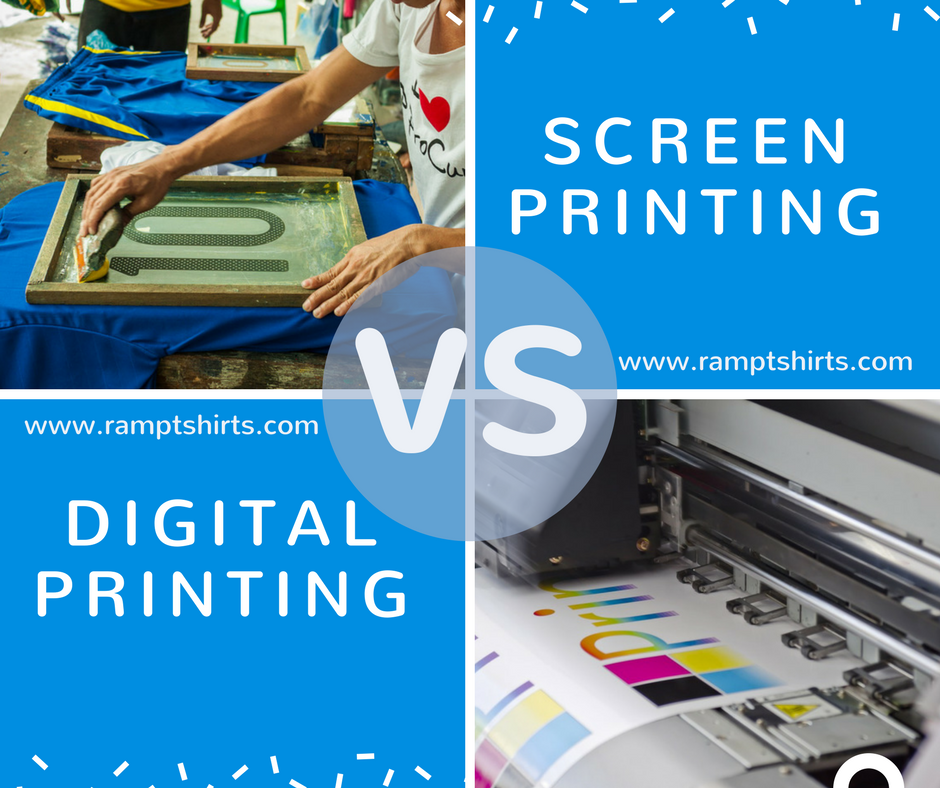Facts About Tx Tees Revealed
Facts About Tx Tees Revealed
Blog Article
The 10-Minute Rule for Tx Tees
Table of ContentsThe smart Trick of Tx Tees That Nobody is Discussing5 Easy Facts About Tx Tees ShownTx Tees Can Be Fun For AnyoneWhat Does Tx Tees Mean?Some Ideas on Tx Tees You Should KnowThe Best Strategy To Use For Tx TeesTx Tees Things To Know Before You Get This
That brings your total amount to about $1,900 gross and shipping. Build up various other expenses, like the number of energies it requires to run the shop and the expense of ink and emulsion per layout. custom monograming. Take the print below. This is a one-color photo, so the expense of ink per tee shirt is roughly 20 cents.The emulsion ought to just be a couple of cents since you 'd only need to coat one screen for this task. Normally, printers attempt to make up to 45% earnings on a print work.

With DTF, you can print a handful of t-shirts, or just one. Make use of the very same calculator as the section above to compute just how much revenue you 'd use DTF transfers. Contrast the expenses and profits to whichever approach talks best to your setup and procedure. Both screen printing and DTF have their niches worldwide.
A Biased View of Tx Tees
The most effective means to know? Ask around and see what print stores like your own are doing. embroidery shop. Attempt both out and see which you like better
When you're selecting what kind of printing approach to use for printing your artwork styles on your garments, it's important that you know the differences in between these 2 methods so you can optimize outcomes while minimizing costs. Screen printing is the most frequently utilized strategy for publishing layouts on fabrics.
DTG printing is also known as spot or direct to garment printing since it prints only what is needed as opposed to making a screen as display printers do. http://go.bubbl.us/e0be4a/f460?/TX-Tees. Display printing functions by screen filler squeegee display printing ink screen mesh display, then moving the picture to garment using warmth and/or pressure
The DTG printer makes use of special dye-sublimation inks that are used into a pre-designed photo by a digital printing system. The inks enter into the textile, allowing for vivid colors and exceptional information. It's also called spot or direct to garment printing due to the fact that it prints just what is needed as opposed to making a display as screen printers do.
More About Tx Tees
It's much quicker - you can publish a fullcolor photo in mins, as opposed to hours for screen printing. Second, there's no established up time or prices involved - you can print any type of layout you such as, without needing to create a screen first. Third, there's no waste - because screen printers screen print one design at a time, they have to screen each shade separately.
The paper is very expensive and can only be used as soon as. Once it's published on, it needs to be discarded. - The initial acquisition rate is reduced than the ahead of time financial investment of DTG printers- You can publish multi-color layouts one display each time rather than having to print each shade independently like DTG printing.

The 9-Minute Rule for Tx Tees
Rather of using screen mesh as display printers do, color sublimation printers use laser innovation to move your photos onto garments or paper. A heat process moves the color from its solid-state directly into the gas phase which subsequently integrates it onto fabric substrates when they are quickly warmed to high temperatures under high pressure.
Sublimation printing is environment-friendly. It utilizes much less water than screenprinting, and due to the fact that it does not entail using damaging solvents, it's secure for all types of apparel. The dye sublimation inks are likewise unsmelling when cured, unlike screen printers that use damaging chemicals throughout the display printing procedure that leave an undesirable smell.
They additionally conserve cash on pricey tools like direct exposure devices since dye sublimation printers don't require a UV exposure unit or a flash cure stove that is typically used in screen printing (custom t-shirt design). What is straight to garment printing (DTG Printing)? DTG printing is a digital screenprinting process that prints directly onto textile making use of specialized inkjet printers
Some Ideas on Tx Tees You Should Know
DTG printing uses numerous benefits over typical screenprinting, consisting of the ability to publish photographic top quality photos, better shade vibrancy, and the capacity to print designs on darker textiles. DTG printers work by warming the textile ink until it develops into a gas. The gas after that permeates the textile, bonding with the fibers to produce a permanent print.

Screen printers just prepare their screen then start publishing till they lack item or ink.- There is a vast array of seasoned display printers around the world, which can be valuable for novices. - It's a slower process - display printers usually need to await the ink to dry before they can print the following shade- Screen printers require manual work, so there's a greater discovering contour and it takes longer to produce a top quality design- Display printing isn't over at this website as precise as DTG printing, so you may obtain some "blood loss" of colors from one part of the photo onto one more if not done properly.
Little Known Facts About Tx Tees.
Instead of making use of screen mesh as display printers do, dye sublimation printers utilize laser technology to move your images onto garments or paper. A warm procedure transfers the color from its solid-state straight into the gas stage which consequently integrates it onto material substratums when they are rapidly heated up to high temperature levels under high pressure.
Sublimation printing is eco-friendly. It utilizes much less water than screenprinting, and because it doesn't entail using harmful solvents, it's risk-free for all sorts of apparel. The color sublimation inks are additionally odor free when treated, unlike display printers that use damaging chemicals throughout the display printing process that leave behind an unpleasant smell.
They additionally save money on expensive tools like direct exposure units because color sublimation printers don't require a UV exposure unit or a flash cure oven that is commonly utilized in screen printing. What is direct to garment printing (DTG Printing)? DTG printing is an electronic screenprinting process that prints directly onto fabric utilizing specialized inkjet printers.
A Biased View of Tx Tees
DTG printing uses lots of benefits over conventional screenprinting, including the ability to print photo top quality photos, higher color vibrancy, and the ability to print layouts on darker textiles. DTG printers function by heating up the textile ink till it develops into a gas. The gas then permeates the textile, bonding with the fibers to produce a long-term print.
Report this page